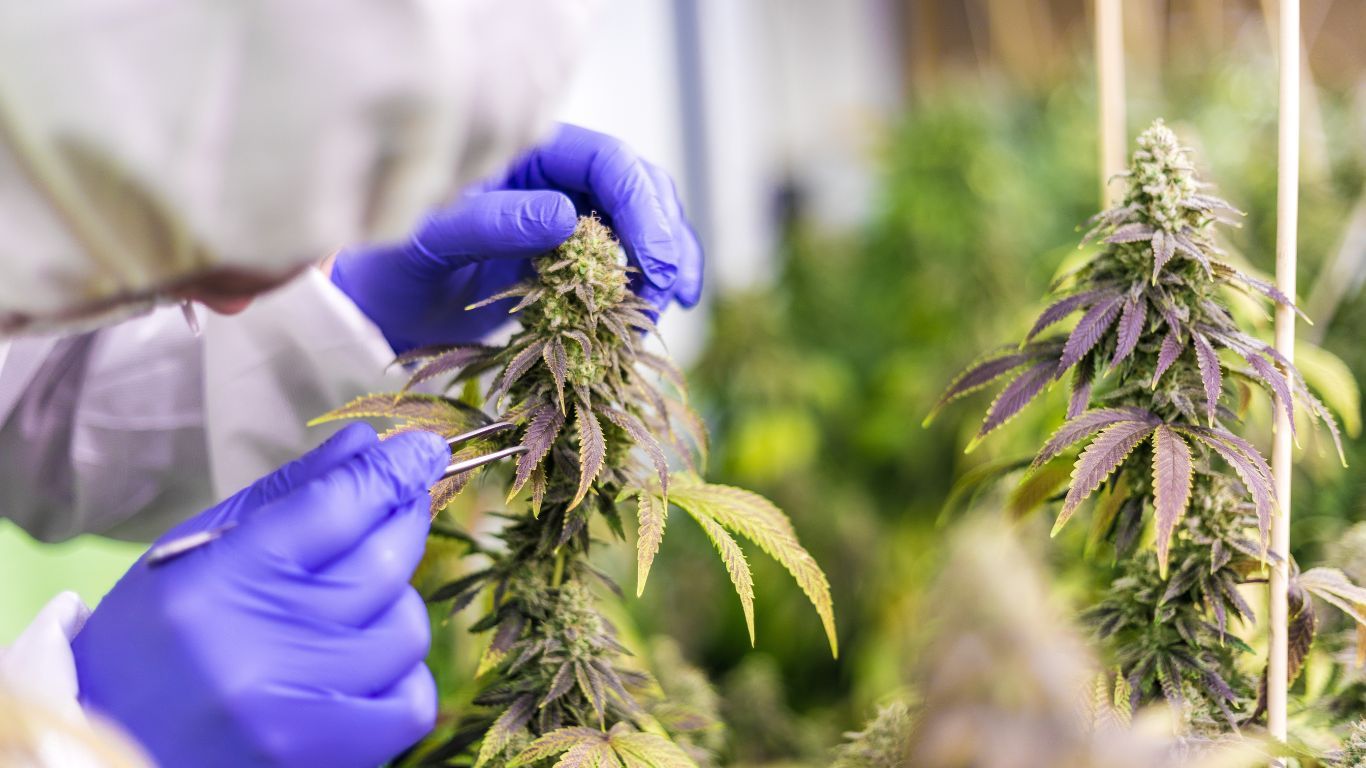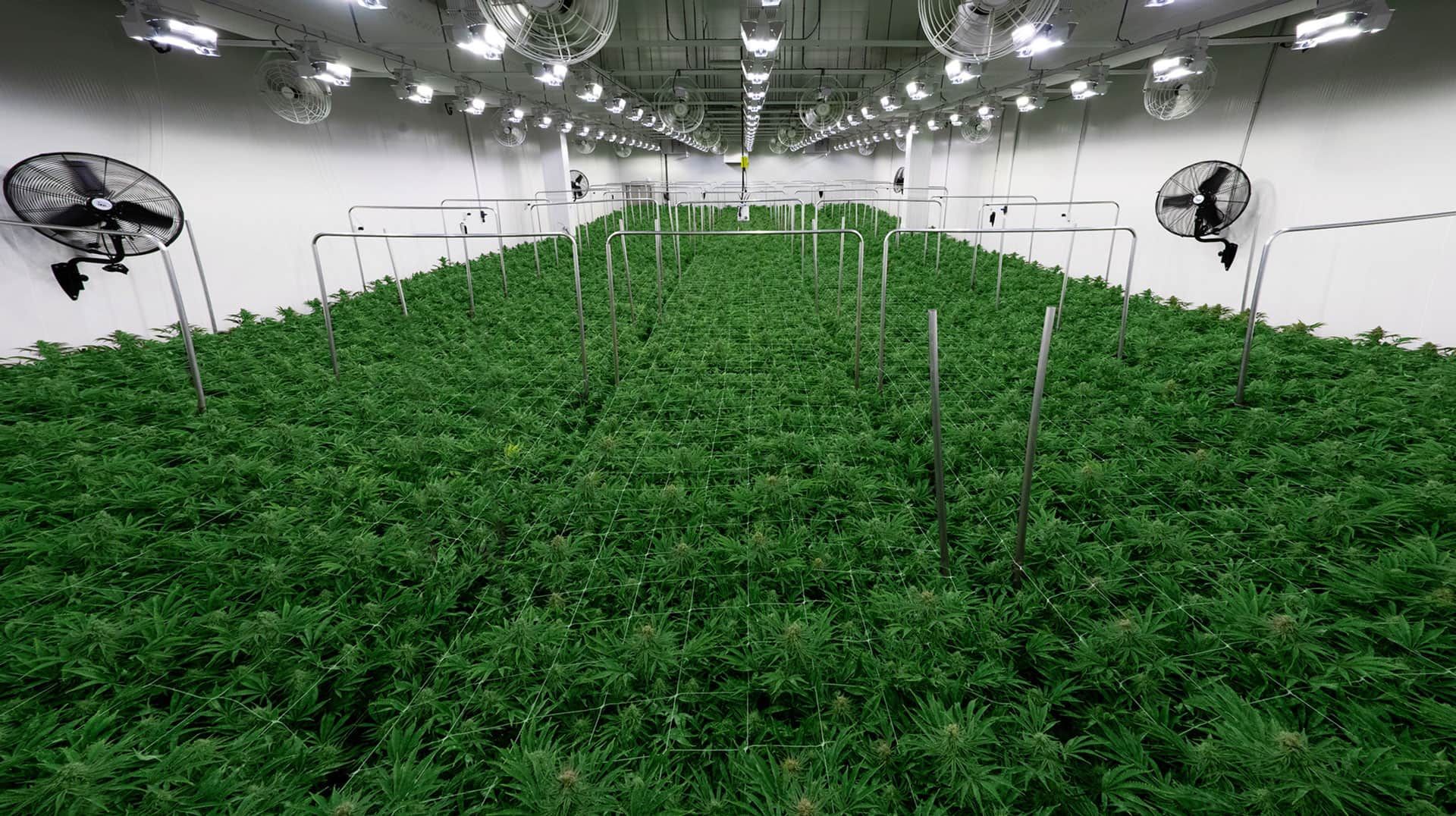
Medical cannabis for humans is well-established. But when it comes to treating animals – and in particular companion pets – the regulatory system in Canada has been slow to respond.
“Our requests weren’t addressed when the Cannabis Act came out in 2018, nor were they considered when the Cannabis Regulations were under review in 2019,” says Dr. Sarah Silcox, a founding director and the current president of the Canadian Association of Veterinary Cannabinoid Medicine (CAVCM).
Dr. Silcox says that the CAVCM, along with the Canadian Veterinary Medical Association (CVMA), has been urging Health Canada to include veterinarians and animals under the Medical Cannabis Regulations since 2017.
The CVMA has been urging for label warnings to include ‘Keep out of the reach of children and animals’ since 2017.
Dr. Sarah Silcox, Canadian Association of Veterinary Cannabinoid Medicine
The CVMA has been advised that changes could be considered when the Cannabis Act and Cannabis Regulations are up for review this year.
“Both the CVMA and CAVCM have submitted yet another request, but to date, we have had no indications that this is currently being considered,” says Dr. Silcox. “It’s beyond frustrating when all we want to do is to have options available to us to treat our patients and to be able to do that through the same pathway that’s available to human physicians.”
The most recent letter from the CVMA was sent to Patty Hajdu, Minister of Health, back on March 30. It raised two main issues: first, that product labels don’t yet include a warning to keep cannabis out of the reach of pets; and second, that veterinarians still don’t have a legal pathway to authorize medical cannabis use for their patients.
Health Canada allows veterinarians to use highly controlled substances like hydromorphone and diazepam, however we can’t access medical cannabis on a case-by-case basis, which makes absolutely no sense.
DR. IAN SANDLER, GREY WOLF ANIMAL HEALTH
“When the government moved to legalize cannabis, veterinarians weren’t consulted,” says Dr. Ian Sandler, a member of the CVMA National Issues Committee, and founder of Grey Wolf Animal Health in Toronto. “Veterinarians were told that the only way to prescribe cannabis to animals was if there was a Health Canada approved veterinary drug. However, at present there are no veterinarian-labelled, legal cannabis products available in Canada.”
Editor’s Note: According the CVMA’s website, through a working group within its National Issues Committee, were and have been actively engaged with the Government of Canada to better understand the impact on veterinarians and their patients of the legalization of cannabis.
A Plan for Animal Health – and Protection
Medical cannabis was legalized back in 2001 – well ahead of the legalization for recreational use, which didn’t occur until 2018. A decade later, and Canada’s veterinarians are still waiting on amendments to the Cannabis Regulations.
“Health Canada allows veterinarians to use highly controlled substances like hydromorphone and diazepam,” says Dr. Sandler. “However, we can’t access medical cannabis on a case-by-case basis, which makes absolutely no sense.”
As it stands, the cannabis products permitted under the category of Veterinary Health Products (VHPs) are those derived from non-viable hemp seeds.
“This pretty much amounts to hemp seed oil and hemp seed flour – similar to what you can find in the grocery store,” says Silcox. “It doesn’t include any products with meaningful cannabinoids.”
Aside from the desire to include veterinarians as health care practitioners who can prescribe medical cannabis to animals, there is also the issue of a warning label for all cannabis products containing THC, particularly edible products.
“The CVMA has been urging for label warnings to include ‘Keep out of the reach of children and animals’ since 2017,” says Silcox. “It would appear that Health Canada is more concerned with the potential push-back from producers having to change their labels than they are the safety of pets. It’s certainly not that they’re unaware of the risk.”
Silcox is correct: the Government of Canada’s “Consumer Information – Cannabis” webpage clearly states: “Store all cannabis (particularly edible cannabis) securely and out of reach of children and pets.”
It would make sense that, with greater awareness, consumers will use their good judgment. Nonetheless, for veterinarians, this is not a trivial issue.
“If an animal consumes too much of a THC-based cannabis product, it can lead to vomiting, diarrhea, light and sound sensitivity, and urinary incontinence,” says Dr. Sandler. “The animal may be very uncomfortable and disoriented for many hours. If it’s a very young or old pet with medical issues, and that may be on concurrent medications, the situation may be even more serious.”
We see so many countries playing with different approaches to cannabis policy. It’s a fantastic time for policy innovators to think outside the box.
Dr. Casara Andre, Veterinary Cannabis Education & Consulting
Given the government’s stated awareness of the problem, and reluctance to act on labelling, it’s also possible that they could be held accountable.
“Accidents happen all too frequently, and one would think that in today’s environment not having a warning on the label places the government at risk of liability, not to mention leaving unsuspecting pets at risk,” says Silcox.
The Right Formula for Veterinary Cannabis
When it comes to cannabis therapies for animals, a “formula” can refer to the form the medication takes – as tincture, treat, topical, etc., – and also to the molecular profile of the product, specifically with regard to cannabinoids and terpenes.
“Similar to humans, the most therapeutic molecular profile depends on the condition, the patient, and which other molecules are in the mix,” says Dr. Casara Andre, the founder of Veterinary Cannabis Education & Consulting in Wheat Ridge, Colorado. “There are formulas for pain, inflammation, anxiety, among others – all with a different mix of molecules working to achieve the desired clinical effect.”
Andre says that, with the increase in cannabis product availability in both Canada and the United States, the issue of cannabis use in a veterinary context is gaining more traction. Nonetheless, there are still plenty of misunderstandings.
“Every vet is inundated with questions from their clients about cannabis,” she says. “I would say that ‘THC is toxic to animals’ is the biggest misconception we battle.”
Andre, unlike many veterinarians in Canada who are waiting on guidance from the government, is actively using cannabis products in a therapeutic context.
“We absolutely utilize THC – and all the other molecules of the cannabis plant – in animals,” she says. “Some simply require more care in administration and a slow titration up in dose.”
And what does the future hold in Canada? We could see a proposed new class of cannabis products coming to market, classified as Cannabis Health Products, that would include products for both people and animals.
“This new classification of health products wouldn’t require a healthcare provider’s oversight,” says Silcox from the CAVCM. “They would be non-prescription, but would be subject to both safety and efficacy testing to be approved.”
Such products would be for treating minor ailments. However, in order to comply with the current Cannabis Act, the products would likely be available only through licensed cannabis providers. The government has an opportunity, as with legalization back in 2018, to be a leader in this area.
“We see so many countries playing with different approaches to cannabis policy,” says Dr. Andre. “Everyone is grabbing from other examples, tweaking to fit their own country’s needs. It’s a fantastic time for policy innovators to think outside the box.”














